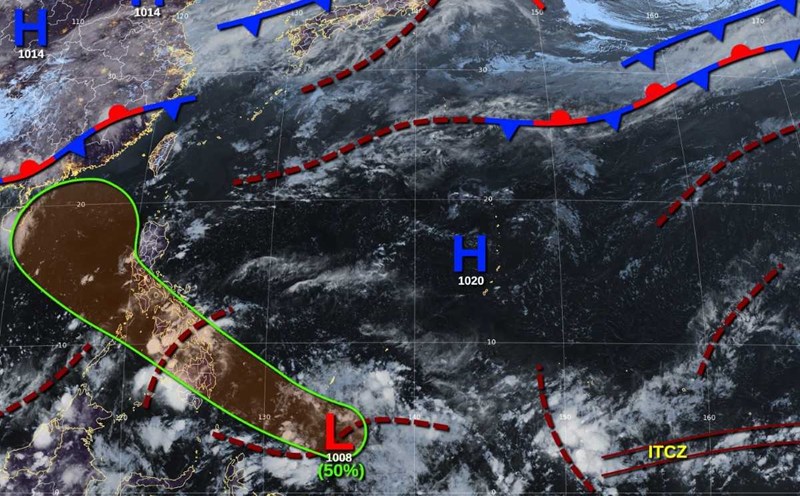For the first time since mid-May, the entire northern hemisphere - including the Atlantic, Pacific and Indian Ocean - has not recorded any tropical storms as of May 16. This unusual silence is both surprising and cautious for meteorologists.
As of May 16, 2025, no storm, tropical depression or cyclone has formed in any northern equatorial ocean - something extremely rare in modern history.
According to meteorologist Phil Klotzbach from Colorado State University (USA), the world has had an average of 3.5 named storms each year. But this year, the number is still 0.
This has happened, but only 5 times in the past 75 years - in 1973, 1983, 1984, 1998 and most recently 2024. Of these, most are below-average typhoon seasons. Last year alone, despite a slow start, the hurricane season still reached nearly average levels with 58 named storms.
It is noteworthy that most of the early season's typhoon activity typically comes from the Northwest Pacific, which is directly affected by monsoons and low pressure and tornadoes near the Philippines. However, this year, this region is experiencing a phenomenon of wind blowing back - creating an atmospheric flow in the opposite direction to the favorable conditions for storms.

Current wind speeds create anti-cyclonic flows, which do not support storm formation, explains Klotzbach.
Historical data shows that no storms before May 16 do not mean a weak typhoon season. In 1984, despite a late start, the hurricane season ended with 65 named storms. 1998 - which coincided with a strong El Nino - also recorded 53 typhoons.
Meanwhile, 1973 set a record for the year with the latest first typhoon: Typhoon Ava formed on June 2 in the Northeast Pacific.
While the North Hemisphere is unusually quiet, the South Hemisphere is much more vibrant. From July 2024 to now, there have been 31 named storms, much higher than the average of 25. Areas such as Australia and the Pacific archipelago have experienced an early and strong typhoon season.
Meteorologist Ryan Maue said there is a possibility of an early tropical storm in the eastern Pacific by the end of May. However, leading forecast models show that the Caribbean and Gulf of Mexico will remain calm.
Despite a slow start, forecasters agree that do not be subjective about the storm season. Climate change, ocean flows, El Nino or La Nina phenomena can all change the situation in just a few weeks. Experience from previous years shows that just one big storm making landfall is enough to cause disaster, even if there are few storms in the whole season.











